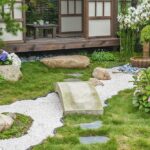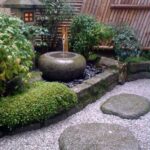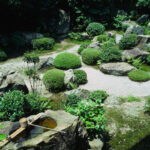Japanese garden design has a long history that dates back to the 7th century when it first originated in Japan. These gardens are renowned for their peaceful and serene atmosphere, which is created through careful attention to detail in the layout and design. Japanese gardens are not merely decorative spaces, but are designed to reflect and enhance the natural beauty of the surrounding landscape.
One of the key principles of Japanese garden design is the concept of “borrowed scenery” or “shakkei.” This principle involves incorporating elements of the surrounding landscape, such as mountains or bodies of water, into the design of the garden in order to create a sense of harmonious unity with nature. By carefully positioning plants, rocks, and other elements, designers are able to create a seamless transition between the garden and its surroundings.
Another important aspect of Japanese garden design is the use of symbolism and metaphor. Plants, stones, and other elements are carefully chosen and arranged to evoke specific feelings or meanings. For example, a stone lantern placed along a pathway may symbolize enlightenment, while a carefully pruned pine tree may represent longevity and resilience. These symbolic elements add depth and meaning to the garden, inviting visitors to contemplate and reflect on the natural world.
Water features also play a prominent role in Japanese garden design, with ponds, streams, and waterfalls often included to create a sense of tranquility and movement. Water is seen as a vital element in Japanese culture, representing the flow of life and the passage of time. The sound of running water and the reflection of plants and rocks in a still pond add to the sense of serenity and peace that is characteristic of Japanese gardens.
Another key element of Japanese garden design is the concept of “wabi-sabi,” which emphasizes simplicity, imperfection, and the beauty of natural materials. This philosophy is rooted in the belief that true beauty lies in the imperfect and transient nature of things. In a Japanese garden, this principle is reflected in the use of weathered stones, moss-covered paths, and carefully pruned trees that evoke a sense of age and harmony with nature.
Overall, Japanese garden design is a highly refined and disciplined art form that seeks to create a tranquil and harmonious space that is in tune with the natural world. By incorporating principles such as borrowed scenery, symbolism, water features, and wabi-sabi, designers are able to create landscapes that are both aesthetically pleasing and spiritually enriching. Whether visiting a traditional tea garden or a contemporary Zen garden, visitors are sure to find inspiration and a sense of peace in the carefully crafted world of Japanese garden design.
















